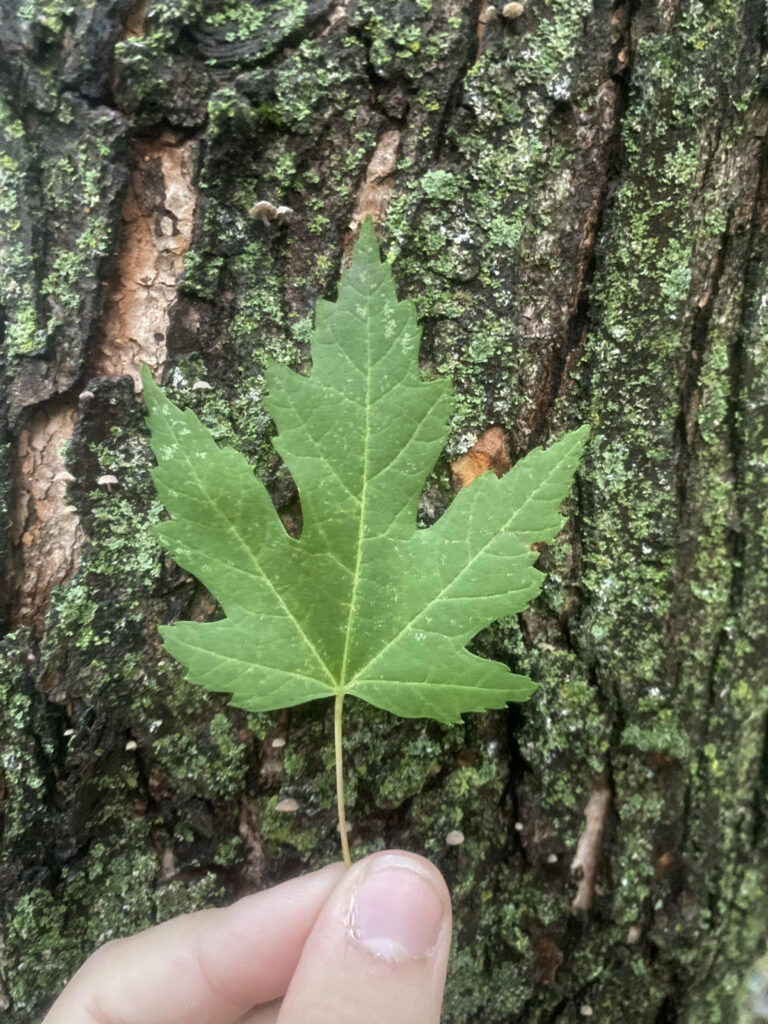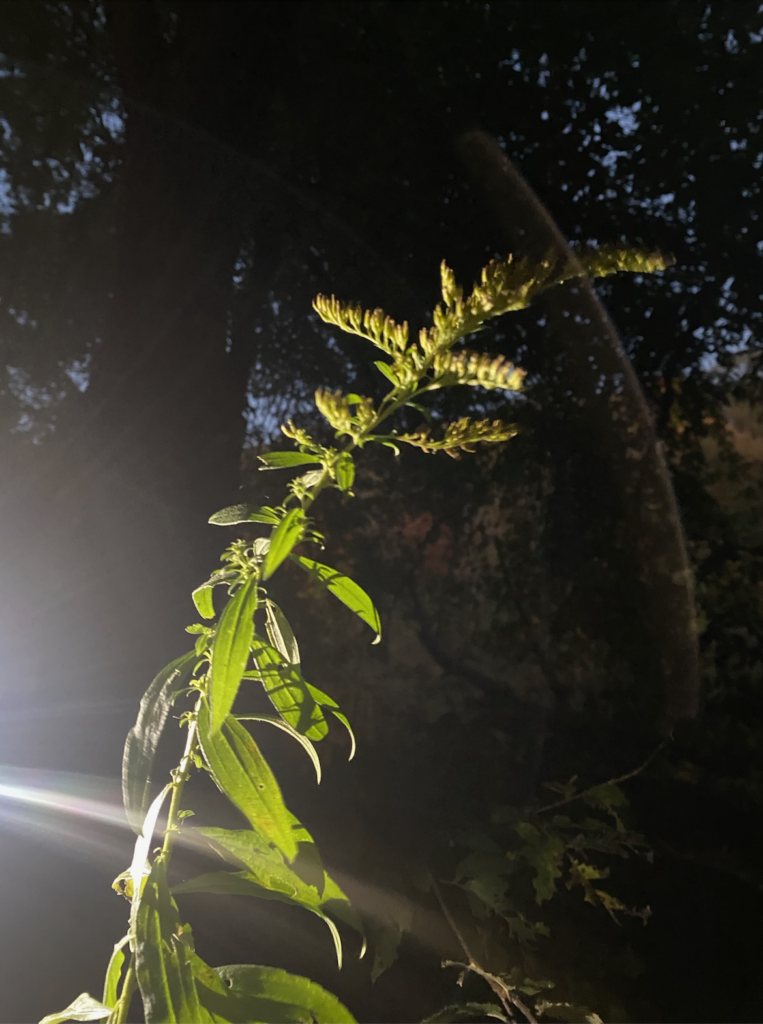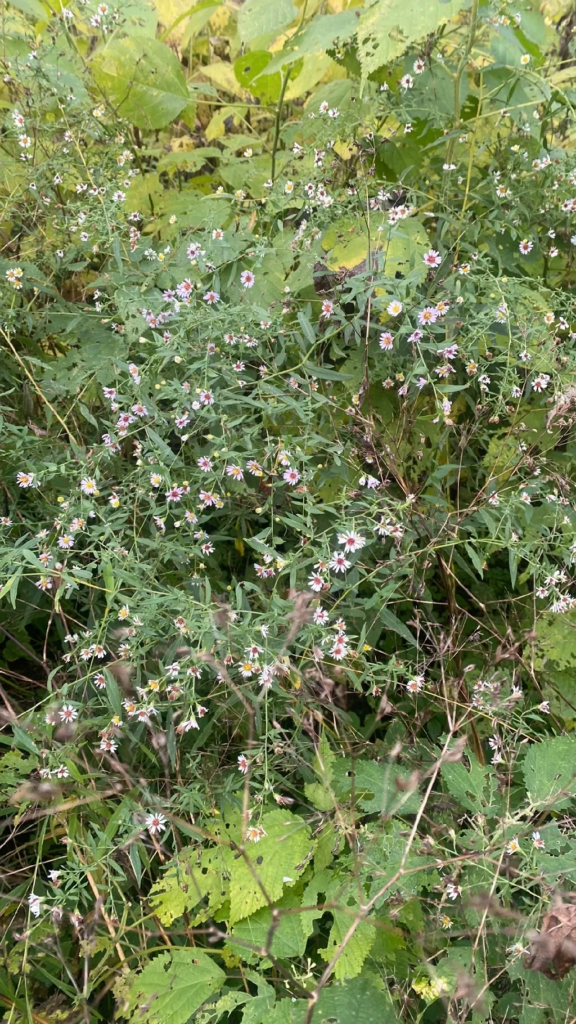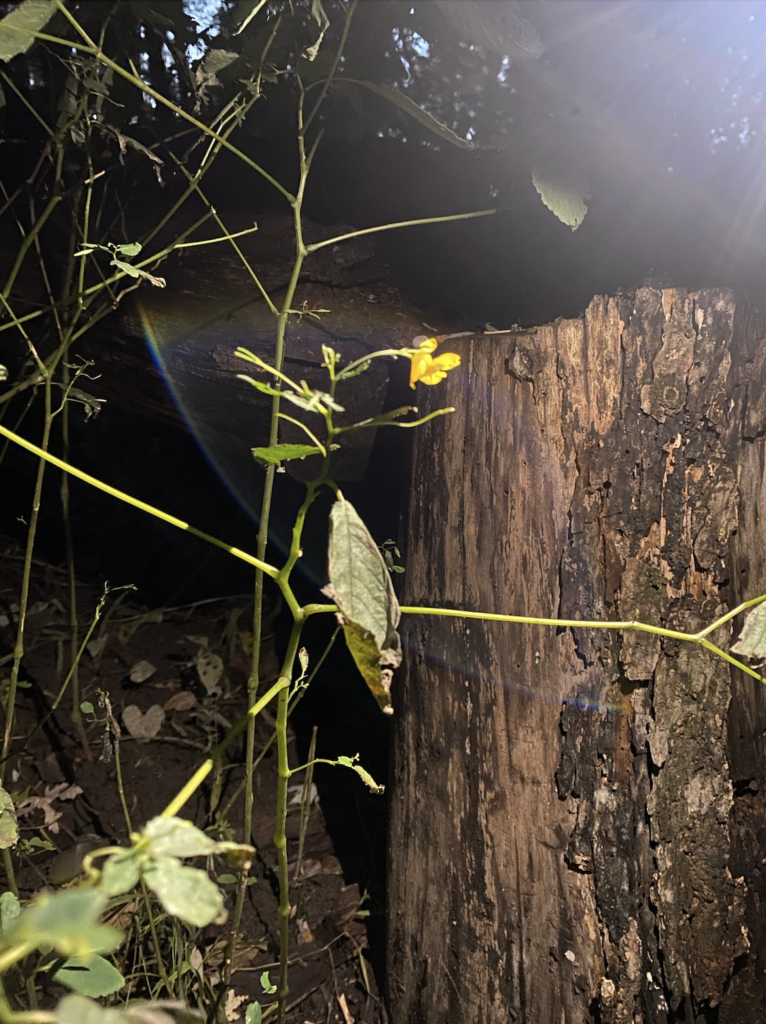The area around the silver maple grove which I am studying is an incredibly biologically diverse area featuring many species of trees, herbaceous, and woody ground cover. Some of these species which I have identified so far include :
- Silver Maple Tree (Acer saccharinum)
- Green Ash Tree (Fraxinus pennsylvanica)
- Eastern Cottonwood Tree (Populus deltoides)
- Slippery Elm Tree (Ulmus rubra)
- Boxelder Tree (Acer negundo)
- Calico Aster (Symphyotrichum lateriflorum)
- Giant Goldenrod (Solidago gigantea)
- Pinkweed (Persicaria pensylvanica)
- Devil’s Beggarticks (Bidens frondosa)
- White Goosefoot (Chenopodium album)
- Orange Jewelweed (Impatiens capensis)
Trees:
As you might have guessed by now, my blog is titled “By The Silver Maple Grove…” for a reason. The centerpiece of the spot which I have chosen to study is a grove of five silver maple trees, all of which are leaning (to various extents) over the river. Silver Maple trees prefer moist soils and are notable for their ability to withstand flooding – a common occurrence here on the bank of the Winooski river. Surprisingly to me, the leaves of the silver maples in the area are the only ones not exhibiting almost fluorescent colors. Although the silvery tint of the leaves does glitter in the sunlight, the color of these leaves in the fall becomes only a pale yellow. On both sides of this main grove are more silver maples. Alongside this abundance of silver maples, however, there are also a number of other tree species growing in the area including eastern cottonwood and green ash.
Eastern cottonwood trees are known to grow along streams and on bottomlands all along the east coast of North America, thriving in moist and wet conditions. They are members of the Poplar family and have incredibly distinct bark which is a dark grayish-brown color with deep ridges all throughout. Around now, the leaves of the cottonwood trees in the Intervale appear to be almost glowing in a golden-yellow color.
The green ash tree is an amazingly adaptable tree which can grow in a range of soil conditions, although it prefers conditions like the wet ones in which it grows here. Similarly to the eastern cottonwood, the green ash leaves are currently displaying a bright yellow hue during these remaining weeks of autumn.


Woody and Herbaceous Plant Cover
On the opposite side of the trail from the silver maple grove, giant goldenrod and orange jewelweed form a wall rising up to around waist-height which reaches back a couple meters at least. These two plants are by far the most prominent herbaceous plant in the area, covering at least half of the site which I am observing.
When I visited the grove last Friday, it was hard to tear myself away from these plants, so much so that I ended up staying in the Intervale past sunset and into nightfall. The primary cause for this, I’d say, was that the seedpods of the jewelweed are beginning to ripen. Commonly known as “touch-me-not”, the ripened seed pods of the jewelweed plant explode upon being touched – scattering their seeds onto the forest floor. I must have spent at least half-an-hour in the grove on this past visit just popping jewelweed, this simple activity, although repetitive, still has yet to get old. Some of the jewelweed by the grove is still in bloom, moreover, and speckles the golden-lit area with dots of yellow and orange.
Giant goldenrod are probably some of the most regal plants that I could imagine. In bloom now, giant goldenrod flowers form cone-shaped masses of vibrant yellow blooms which point up towards the sky. Aside from their general beauty, goldenrod flowers also provide an incredibly important nectar and pollen source for bees, butterflies, and some wasps as well during the late summer and early fall. My last visit to the grove, however, likely marked one of my last butterfly sightings of the season since the temperatures are beginning to dip slightly too low for many pollinators. Giant goldenrod are one of two members of the aster family which is represented by the grove. Perhaps my favorite plant growing here is the calico aster; a bloom which more-or-less resembles the giant goldenrod in many ways except for the fact that it provides a contrast to the golden tone of the area and speckles the view with purple instead.
There’s not much woody ground cover by the grove, however there are some young green ash trees which will act in this role until they grow taller.



